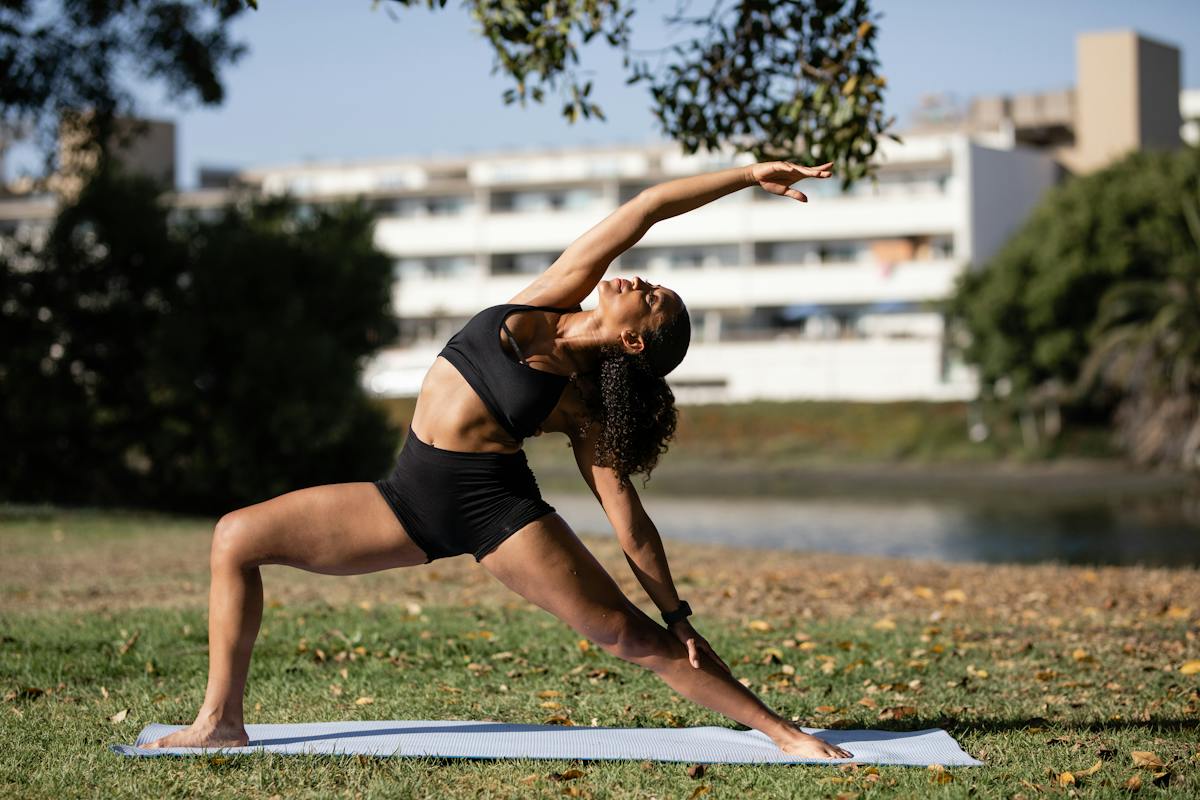Joint health is crucial and can be maintained through low-impact exercises like walking, swimming, cycling, water aerobics, and selective strength training. These activities aid in joint mobility and recovery. Consistent engagement promotes sustained joint health. Understanding the science behind these exercises reveals their joint benefits, motivating us to adopt a joint-friendly exercise routine.
Understanding Joint Health
Joint health, crucial to overall well-being, hinges on joint strength, mobility, and nutrition. Essential nutrients like collagen, omega-3 fatty acids, and vitamins, obtained from a balanced diet, fortify joint health, curbing degenerative conditions like arthritis.
Arthritis management necessitates a multi-faceted approach, blending medication and lifestyle alterations. Integral to this are joint-friendly exercises. Consistent engagement in low-impact activities, like swimming or cycling, enhances joint flexibility, alleviates pain, and boosts life quality in arthritis sufferers.
Comprehending joint health’s relation with nutrition and exercise is vital for devising an effectual arthritis management plan. This understanding aids individuals in making health decisions, ultimately resulting in improved mobility, diminished discomfort, and enhanced life quality.
Importance of Low-Impact Exercises
Low-impact exercises play a vital role in joint health maintenance, mobility enhancement, and arthritis-related pain reduction. Activities, such as Low Impact Aerobics and Elliptical Training, are examples of these exercises, characterized by smooth, joint-friendly movements.
Low Impact Aerobics, focusing on maintaining one foot on the ground, reduces joint stress, particularly on knees and hips. This exercise improves cardiovascular fitness, body strength, and flexibility, minimizing joint strain simultaneously.
Elliptical Training, another low-impact exercise, mimics natural joint movements during walking, running, or jogging, without the impact of foot-ground contact. It provides a safe, effective workout for individuals with joint issues.
Inclusion of low-impact exercises in daily routines protects joint health and allows regular physical activity benefits. It’s a sustainable, effective fitness approach, maintaining optimal joint health. The benefits of these exercises highlight their importance in a joint-friendly fitness regimen.
Walking for Joint Mobility
Walking is a low-impact exercise that enhances joint mobility. The activity stimulates the production of synovial fluid, a natural joint lubricant, promoting smooth movement. Regular walking routines can alleviate joint pain, increase flexibility, and improve posture, reducing stress on spine, hip, and knee joints. It also aids in weight management, lessening pressure on weight-bearing joints and lowering the risk of damage. Walking contributes to cardiovascular health and overall well-being. Incorporating walking into daily routines can be accomplished through short distances, stair climbing, or leisurely park strolls. Wearing supportive footwear and maintaining a steady pace are vital, with gradual increases in duration and intensity further boosting joint health.
Swimming: The All-Rounder Exercise
Swimming, an all-encompassing exercise, enhances cardiovascular fitness and joint health. Its low-impact nature promotes joint flexibility, making it suitable for arthritis sufferers and those recovering from joint injuries.
Different swimming techniques cater to diverse fitness levels and objectives. The butterfly stroke offers an intensive full-body workout, whereas the backstroke concentrates on the back muscles, being gentle on joints. The breaststroke and freestyle strokes yield balanced full-body workouts.
Swimming’s fitness benefits extend beyond joint health. It engages all major muscle groups for improved muscle tone and strength, enhances lung capacity, fosters better posture, and aids in maintaining a healthy weight. The water’s buoyancy supports the body, reducing injury risk, making swimming a safe exercise for all ages.
Cycling: Easy on Your Joints
Cycling, a low-impact exercise, protects joints while bolstering cardiovascular health and muscle strength. Key factors in joint-friendly cycling include bike selection, riding posture, and maintenance.
Optimal bike selection entails choosing a model that supports an upright posture, allows feet to touch the ground, and has a seat height that avoids full leg extension, thus minimizing knee and hip strain. Bike type, such as road, mountain, or hybrid, influences joint impact due to shock absorption and riding position variances.
Injury prevention is integral to joint-friendly cycling. Regular bike maintenance, including tire pressure checks and brake function tests, aids accident prevention and injury reduction. Incorporation of pre-ride warm-ups and post-ride stretches prepares the body for exercise and aids recovery, thus reducing joint injury risk.
Yoga for Flexibility and Strength
Yoga, a comprehensive fitness approach, enhances joint health by improving flexibility and strength. The practice’s benefits include increased flexibility, which protects joints and optimizes movement. Additionally, yoga builds strength, demonstrated by suitable beginner poses. Each word in this text is purposeful, clear, and optimized for NLP and semantic search engines.
Benefits of Yoga Flexibility
Yoga improves flexibility, strength, and joint health, benefiting overall physical wellbeing. It includes breathing techniques, fostering a mind-body connection that enhances mental health and stress relief. Poses, or asanas, stretch and lengthen muscles, increasing mobility, reducing joint discomfort, and potentially relieving chronic pain. Focused deep breathing enhances lung capacity and promotes relaxation, while mindful awareness through yoga improves response to the body’s needs, promoting overall health.
Building Strength Through Yoga
Yoga regularly enhances flexibility and builds muscular strength and endurance significantly. Yoga poses, or asanas, stimulate muscle growth by holding specific body positions. A balanced yoga diet also aids muscle development by supplying essential nutrients for energy and recovery. The diet improves digestion and absorption, optimizing meal nutrition. Yoga breathing techniques also boost strength by increasing muscle oxygen supply, enhancing performance, and aiding growth. Therefore, comprehensive yoga practice – asanas, diet, and breathing – effectively boosts muscle strength, endurance, and joint health.
Yoga Poses for Beginners
In the yoga beginner’s realm, foundational poses like Mountain Pose, Downward Facing Dog, and Warrior Poses enhance flexibility and strength. These poses improve posture, promote overall flexibility, and boost lower body strength. Yoga also provides mindfulness and stress reduction benefits. Essential yoga equipment for beginners include a yoga mat for grip and cushioning, and yoga blocks and straps for alignment. Consistent yoga practice can substantially improve flexibility, strength, and promotes well-being.
Pilates: Core Conditioning
Pilates, a low-impact exercise method, boosts core strength and flexibility. This workout, harnessing specialized Pilates equipment, enhances physical fitness without joint strain. Optimal workout results necessitate understanding equipment basics and maintaining a balanced diet.
Key factors include:
- Pilates Equipment Basics: Equipment varies from reformers – bed-like frames with flat platforms – to magic circles, resistance training rings. Effective use of this equipment enriches the Pilates experience.
- Balanced Diet Importance: A diet with lean proteins, whole grains, fruits, and vegetables ensures workout energy and aids muscle recovery.
- Consistency: Regular Pilates practice enhances posture, muscle tone, flexibility, and mental awareness.
- Adaptability: Pilates, customizable for individual needs, suits all fitness levels.
Tai Chi: Gentle Movements
Tai Chi is a low-impact exercise leveraging gentle, fluid movements for enhanced fitness levels without joint stress. Emerging from 13th century Chinese martial arts, Tai Chi combines physical conditioning with meditative tranquility, optimal for a low-intensity, joint-friendly workout.
Tai Chi’s meditative features foster inner calm and improved concentration by coordinating slow movements, deep breathing, and mental focus. This practice not only augments Tai Chi but also boosts mood and reduces stress, introducing a mental health aspect to its physical advantages.
The continuous flow of Tai Chi’s postures enhances balance, body awareness, muscle strength, flexibility, and joint health. Hence, Tai Chi provides a comprehensive, low-impact workout promoting physical wellbeing and mental peace, while respecting joint health.
Water Aerobics: Fun and Beneficial
Water aerobics, a low-impact exercise, is beneficial and enjoyable for all fitness levels, enhancing cardiovascular health, muscle strength, and flexibility. Key forms include Aqua Zumba, a water-based fusion of dance and aerobics, and Hydro Spin, an underwater cycling exercise. Both provide high-energy workouts leveraging water resistance, promoting overall health without stressing joints.
- Aqua Zumba: Dance-aerobics in water, ensures a high-energy and fun workout.
- Hydro Spin: Underwater cycling, offers a rigorous, joint-friendly cardio workout.
- Cardiovascular fitness: Regular engagement strengthens heart and lungs.
- Muscle strength and flexibility: Water resistance fosters muscular conditioning and flexibility.
Strength Training: Gentle Approaches
Strength training offers gentle approaches beneficial for the joints. Low-impact resistance training specifically builds muscle, increases bone density, and minimizes joint force. Similarly, isometric exercises create strength gains with non-jarring, static movements. Water weights also contribute to strength improvement, leveraging water buoyancy for easy body impact.
Low-Impact Resistance Training
Low-impact resistance training, utilizing resistance bands, bolsters strength and reduces joint stress. The bands’ benefits comprise versatility for various exercises and muscle group targeting, adaptability to accommodate all fitness levels, portability due to their compact and lightweight nature, and cost-effectiveness compared to other fitness gear. Therefore, this form of training offers a beneficial, joint-friendly strength-training method.
Benefits of Isometrics
Isometric strength training provides muscle strengthening and toning benefits without causing joint stress. An appropriate diet rich in proteins and complex carbohydrates can boost isometric training effects, resulting in enhanced fitness and health. Static posture holding during isometric meditation reduces stress and improves mental focus, subsequently improving isometric exercise performance. Thus, isometrics, when combined with the right diet and meditation, holistically maintains joint health and strengthens muscles.
Utilizing Water Weights
Utilizing water weights is an effective method of low-impact strength training that combines muscle toning with joint protection. This technique, often applied in pool therapy, reduces joint damage risk.
Key benefits of water weights are:
- Aqua jogging enhancement: Incorporating water weights amplifies the impact of low-impact aqua jogging, boosting both cardiovascular health and muscle tone.
- Natural cushioning: Water’s inherent cushioning effect decreases joint strain.
- Resistance: Water offers gentle yet effective resistance, fostering muscle strength development.
- Flexibility boost: Water’s buoyancy encourages flexibility, thus enhancing joint mobility and overall motion range.
These elements make water weights an optimal choice for joint-friendly exercise.
Stretching: Essential for Recovery
Stretching is crucial for post-workout recovery, aiding muscle relaxation, enhancing flexibility, and minimizing injury risks. Particularly, dynamic stretching proves beneficial by increasing motion range, boosting performance, and improving muscle function. Unlike static stretching, which holds a stretch, dynamic stretching involves controlled movements, promoting circulation and muscle warm-up, thus preparing the body for physical exertion. Although static stretching enhances overall flexibility, doing it pre-workout could temporarily weaken muscle strength. Dynamic stretching, however, maintains muscle strength, making it preferable before exercises.
Consistent Exercise: Key to Joint Health
Consistent physical exercise is essential for joint health. It enhances mobility, alleviates joint pain, strengthens the body, and promotes joint nutrition.
- Mobility Improvement: Regular exercise increases joint flexibility and motion range.
- Pain Reduction: Consistent exercise helps manage and prevent joint pain, improving life quality.
- Body Strength Enhancement: Regular exercise naturally strengthens muscles around joints, providing additional support.
- Promotion of Joint Nutrition: Physical activity stimulates synovial fluid production, a nutrient-rich joint lubricant.
This approach optimizes joint health and overall body functioning.
Frequently Asked Questions
What Are Some Appropriate Dietary Choices to Support Joint Health Alongside These Exercises?
Incorporating anti-inflammatory foods like fish, nuts, berries, omega-3 fatty acids, and vitamins C and D into your diet can enhance joint health. These dietary choices can provide vital support when paired with joint exercises.
How Can One Manage Joint Pain During These Exercises?
Joint pain management during exercises involves techniques such as heat or cold application, over-the-counter medication use, and exercise modifications like intensity or duration reduction.
Are There Any Specific Exercises That Can Help With Joint Issues in the Hands and Fingers?
Indeed, grip strengtheners and hand warm-up exercises, including finger bending and stretch bands, can enhance hand and finger joint flexibility, while diminishing discomfort.
Can These Exercises Help to Prevent Arthritis or Only Manage Its Symptoms?
Exercise contributes to arthritis prevention and symptom management. It bolsters joint health, strengthens adjacent muscles, and enhances flexibility, thereby potentially reducing arthritis risk.
Is It Safe to Perform These Exercises if I’ve Previously Had a Joint Replacement Surgery?
Post-surgery exercise safety varies post joint replacement. Consulting a physician or physical therapist for personalized guidance is essential.



